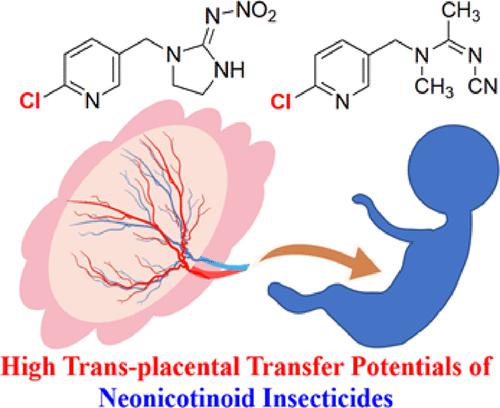当前位置:
X-MOL 学术
›
Environ. Sci. Technol.
›
论文详情
Our official English website, www.x-mol.net, welcomes your
feedback! (Note: you will need to create a separate account there.)
Neonicotinoid Insecticides and Their Metabolites Can Pass through the Human Placenta Unimpeded
Environmental Science & Technology ( IF 10.8 ) Pub Date : 2022-11-28 , DOI: 10.1021/acs.est.2c06091 Henglin Zhang 1 , Xueyuan Bai 2 , Tao Zhang 1 , Shiming Song 1 , Hongkai Zhu 3 , Shaoyou Lu 4 , Kurunthachalam Kannan 5 , Hongwen Sun 3
Environmental Science & Technology ( IF 10.8 ) Pub Date : 2022-11-28 , DOI: 10.1021/acs.est.2c06091 Henglin Zhang 1 , Xueyuan Bai 2 , Tao Zhang 1 , Shiming Song 1 , Hongkai Zhu 3 , Shaoyou Lu 4 , Kurunthachalam Kannan 5 , Hongwen Sun 3
Affiliation

|
Studies on neonicotinoid (NEO) exposure in pregnant women and fetuses are scarce, and transplacental transfer of these insecticides is unknown. In this study, parent NEOs (p-NEOs) and their metabolites (m-NEOs) were determined in 95 paired maternal (MS) and cord serum (CS) samples collected in southern China. Imidacloprid was the predominant p-NEO in both CS and MS samples, found at median concentrations of 1.84 and 0.79 ng/mL, respectively, whereas N-desmethyl-acetamiprid was the most abundant m-NEO in CS (median: 0.083 ng/mL) and MS (0.13 ng/mL). The median transplacental transfer efficiencies (TTEs) of p-NEOs and m-NEOs were high, ranging from 0.81 (thiamethoxam, THM) to 1.61 (olefin-imidacloprid, of-IMI), indicating efficient placental transfer of these insecticides. Moreover, transplacental transport of NEOs appears to be passive and structure-dependent: cyanoamidine NEOs such as acetamiprid and thiacloprid had higher TTE values than the nitroguanidine NEOs, namely, clothianidin and THM. Multilinear regression analysis revealed that the concentrations of several NEOs in MS were associated significantly with hematological parameters related to hepatotoxicity and renal toxicity. To our knowledge, this is the first analysis of the occurrence and distribution of NEOs in paired maternal–fetal serum samples.
更新日期:2022-11-28











































 京公网安备 11010802027423号
京公网安备 11010802027423号